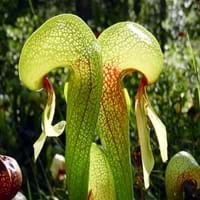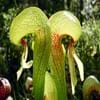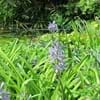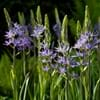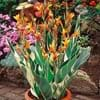Life Span
Annual
Perennial
Type
Bulb or Corm or Tuber
Flowering Plants, Fruits, Trees
Origin
Eastern Asia
Central America, Europe, North America
Types
Not Available
Not Available
Habitat
Boggy areas
Hedge, Scrubs, Woods
USDA Hardiness Zone
6-9
4-8
AHS Heat Zone
9-6
Not Available
Sunset Zone
21,22
Not Available
Habit
Upright/Erect
Not Available
Flower Color
White, Green, Purple
White
Flower Color Modifier
Bicolor
Not Available
Fruit Color
Green, Orange
Yellow
Leaf Color in Spring
Green, Purple
Dark Green
Leaf Color in Summer
Light Green
Green
Leaf Color in Fall
Several shades of Green
Brown, Green, Light Yellow
Leaf Color in Winter
Light Green
Not Available
Leaf Shape
Tubular
Oblong
Plant Season
Spring, Summer, Fall
Summer
Sunlight
Partial Sun, Partial shade, Full Shade
Full Sun, Partial shade
Growth Rate
Medium
Medium
The pH of Soil
Acidic, Neutral
Neutral
Soil Drainage
Well drained
Well drained
Bloom Time
Spring
Fall, Summer
Tolerances
Drought
Drought
Where to Plant?
Container, Ground
Ground
How to Plant?
Seedlings, Transplanting
Grafting, Seedlings, Transplanting
Plant Maintenance
Medium
Medium
Watering Requirements
Distilled Water, Mineral Water
Medium
In Summer
Lots of watering
Lots of watering
In Spring
Moderate
Moderate
In Winter
Average Water
Average Water
Soil pH
Acidic, Neutral
Neutral
Soil Drainage Capacity
Well drained
Well drained
Sun Exposure
Partial Sun, Partial shade, Full Shade
Full Sun, Partial shade
Pruning
Not Available
Prune when plant is dormant, Remove dead or diseased plant parts
Fertilizers
All-Purpose Liquid Fertilizer
All-Purpose Liquid Fertilizer
Pests and Diseases
Red blotch
Aphids, Curculio occidentis, Japanese Beetles, Leaf Rollers, Leafminer, Mites, Red blotch, sawflies, Scale, Stink bugs
Plant Tolerance
Drought
Drought
Flowers
Insignificant
Yes
Flower Petal Number
Single
Single
Foliage Texture
Bold
Medium
Foliage Sheen
Glossy
Matte
Attracts
Insects
Not Available
Allergy
Eye irritation, Skin irritation
Digestive Problems, Respiratory problems
Aesthetic Uses
Not Available
Showy Purposes
Beauty Benefits
Not Available
Beautiful Skin
Environmental Uses
Air purification
Food for birds
Medicinal Uses
Not Available
Anthelmintic, Antibacterial, Astringent, Hypnotic, Laxative, Refrigerant
Part of Plant Used
Not Available
Fruits
Other Uses
Decoration Purposes, Showy Purposes, Used as Ornamental plant
Edible syrup, Jam, Jelly, Used As Food
Used As Indoor Plant
No
No
Used As Outdoor Plant
Yes
Yes
Garden Design
Container, Mixed Border, Wildflower
Not Available
Botanical Name
ARISAEMA ringens
Malus sylvestris
Common Name
Cobra Lily
European crab apple
In Hindi
कोबरा लिली
european crab apple
In German
Kobra Lilie
Der Holzapfel, Europäischer Wildapfel
In French
Cobra Lily
Le Boquettier, le Pommier sauvage ou Pommier des bois
In Spanish
Cobra lirio
Malus sylvestris, el Manzano silvestre, manzano silvestre europeo
In Greek
Cobra κρίνος
Ευρωπαϊκή μήλο καβουριών
In Portuguese
Cobra lírio
Malus sylvestris
In Polish
Cobra lilia
Jabłoń dzika
In Latin
aspidis lilium
european crab apple
Phylum
Tracheophyta
Magnoliophyta
Class
Magnoliopsida
Magnoliopsida
Order
Nepenthales
Rosales
Family
Sarraceniaceae
Rosaceae
Clade
Angiosperms, Asterids, Eudicots
Angiosperms, Eudicots, Rosids
Tribe
Not Available
Not Available
Subfamily
Not Available
Not Available
Number of Species
Not Available
Not Available
Properties of Cobra Lily and European Crab Apple
Wondering what are the properties of Cobra Lily and European Crab Apple? We provide you with everything About Cobra Lily and European Crab Apple. Cobra Lily doesn't have thorns and European Crab Apple doesn't have thorns. Also Cobra Lily does not have fragrant flowers. Cobra Lily has allergic reactions like Eye irritation and Skin irritation and European Crab Apple has allergic reactions like Eye irritation and Skin irritation. Compare all the properties and characteristics of these two plants. Find out which of these plant can be used as indoor plant. If you are interested to decorate your house and garden, find out aesthetic uses, compare them and select the plant which will beautify your surrounding. Along with beautification, try comparing medicinal and edible uses of Cobra Lily and European Crab Apple and you can choose the plant having best and most benefits.
Season and Care of Cobra Lily and European Crab Apple
Season and care of Cobra Lily and European Crab Apple is important to know. While considering everything about Cobra Lily and European Crab Apple Care, growing season is an essential factor. Cobra Lily season is Spring, Summer and Fall and European Crab Apple season is Spring, Summer and Fall. The type of soil for Cobra Lily is Loam and for European Crab Apple is Loamy while the PH of soil for Cobra Lily is Acidic, Neutral and for European Crab Apple is Neutral.
Cobra Lily and European Crab Apple Physical Information
Cobra Lily and European Crab Apple physical information is very important for comparison. Cobra Lily height is 30.00 cm and width 30.00 cm whereas European Crab Apple height is 25.00 cm and width 20.00 cm. The color specification of Cobra Lily and European Crab Apple are as follows:
Cobra Lily flower color: White, Green and Purple
Cobra Lily leaf color: Green and Purple
European Crab Apple flower color: White
- European Crab Apple leaf color: Dark Green
Care of Cobra Lily and European Crab Apple
Care of Cobra Lily and European Crab Apple include pruning, fertilizers, watering etc. Cobra Lily pruning is done Not Available and European Crab Apple pruning is done Prune when plant is dormant and Remove dead or diseased plant parts. In summer Cobra Lily needs Lots of watering and in winter, it needs Average Water. Whereas, in summer European Crab Apple needs Lots of watering and in winter, it needs Average Water.
